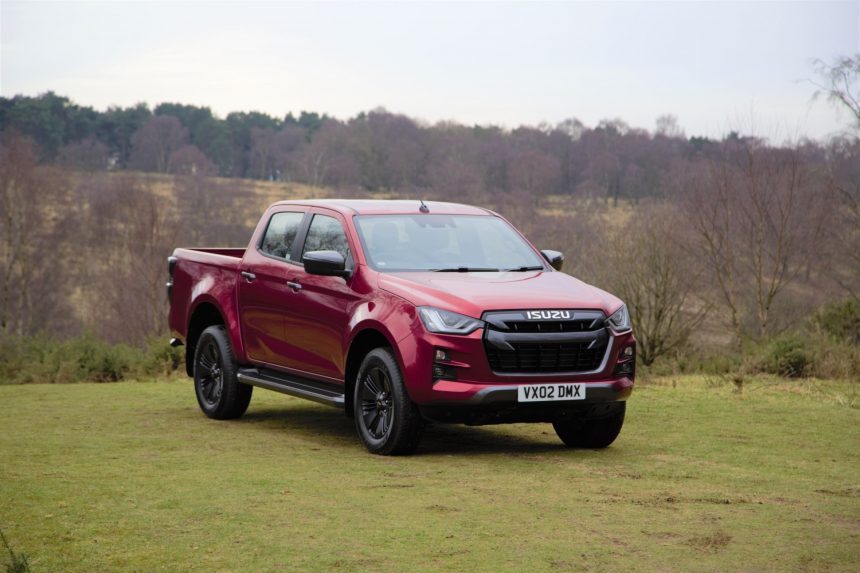
FarmingUK put Isuzu’s freshly launched D-Max through its paces as the company targets a larger chunk of the pick-up market.
With Mitsubishi bringing an end to all sales in the UK and the imminent departures of the Nissan Navara, Mercedes X-Class, and Volkswagen Amarok from the market, the launch of Isuzu’s third generation D-Max is well timed.
Only the Toyota Hilux and Ford Ranger remain as genuine competitors to the D-Max, and Isuzu say they aim to reach 10,000 sales a year by 2025, which would be a remarkable increase from the 3,200 units they sold in the UK last year.
We tested the top of the range double-cab V-Cross that is expected to be the best seller, and it is plain to see that Isuzu have tried to make the D-Max more appealing to the growing numbers of ‘lifestyle’ buyers.
The plush seating and new automated gismos mean the D-Max strays from its previously rough and ready look, but at its core the D-Max remains proudly pragmatic and workmanlike.
Driving
Although on first sight the new D-Max may appear more imposing than its predecessor, it is actually 30mm shorter overall, leaving it with smaller dimensions than both the Hilux and the Ranger.
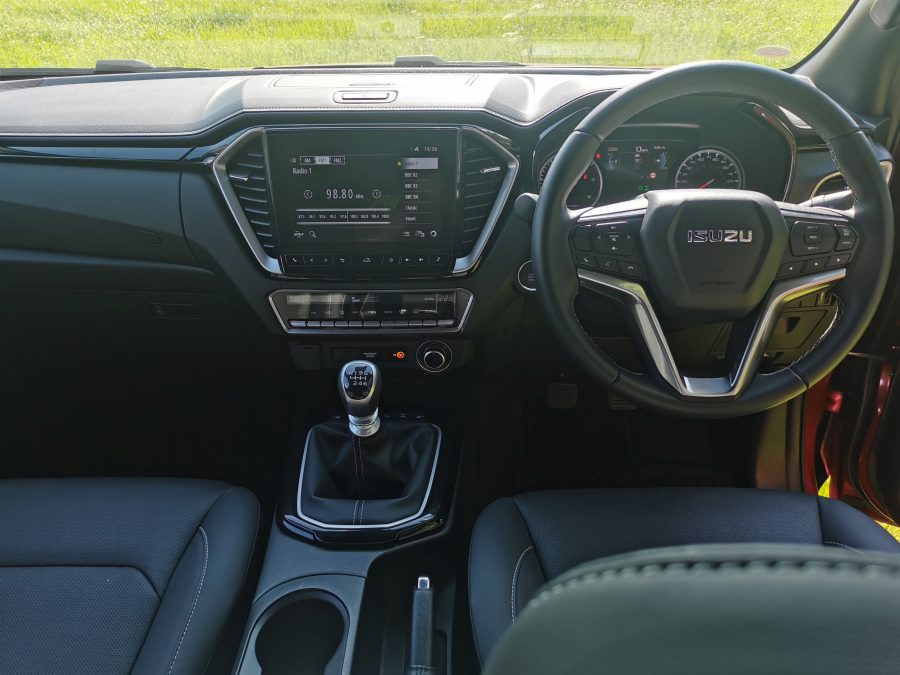
This, combined with its light steering and tight turning circle, makes it a more suitable candidate for nipping through day to day tasks than its competitors, whilst also offering plenty of ruggedness for life on the farm.
Underneath the meaty looking exterior lies a more benign 1.9 litre, 4 cylinder, diesel engine which delivers just 164hp and 360nm of torque.
The 1.9 was first introduced to D-Max when it was last given a facelift in 2017 and is now the only option across all of the specifications, from the basic Utility range to the high end V-Cross we tried.
We found that this can leave the D-Max a little short of zip when pulling away and the efforts Isuzu have made to reduce harshness and vibration are hard to discern as occupants are still left with a slightly clunky ride.
Roughly 70% of D-Max buyers opt for a manual transmission and we found the gearbox to be smooth, however the first few gears are very short so drivers are left working the box a lot.
Although we tested the manual V-Cross, all models from the DL20 upwards come with the option of an auto transmission, which Isuzu tell us has been upgraded and enables gear changes 25% faster.
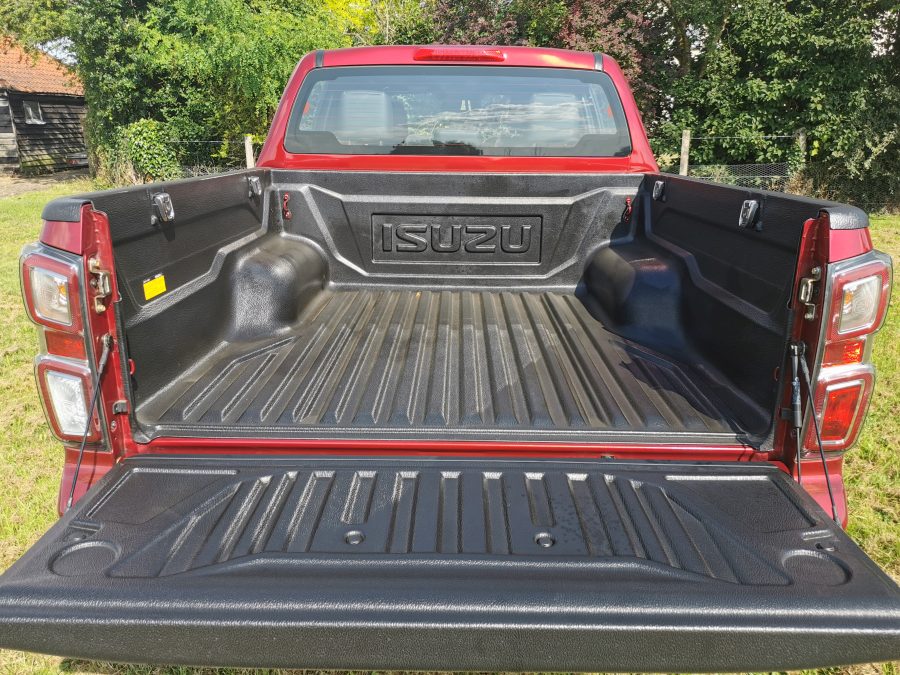
Unlike the Ranger and Hilux, the D-Max is also able to dodge the 10mph speed limit reduction expected of commercial vehicles, by scraping under the 2,040kg kerb weight limit.
And although the D-Max is lighter, it is still able to match its rivals for towing capacity and payload, remaining at the respective figures of 3.5 tonne and 1,100kg that the previous generation could handle.
Off-road
Despite making the pickup more attractive to ‘adventure’ buyers, Isuzu have clearly not forgotten their roots as the D-Max is just as impressive as ever when returned to its off-road habitat.
Its lack of weight and issues absorbing vibration can make for a bouncy ride on rough farm tracks, but when tested on the real tough terrain the D-Max comes into its own.
There have been some alterations in this latest revamp. The rear leaf chassis has been tweaked, the four-wheel drive update, and the air intakes raised to increase the wading depth by 80mm.
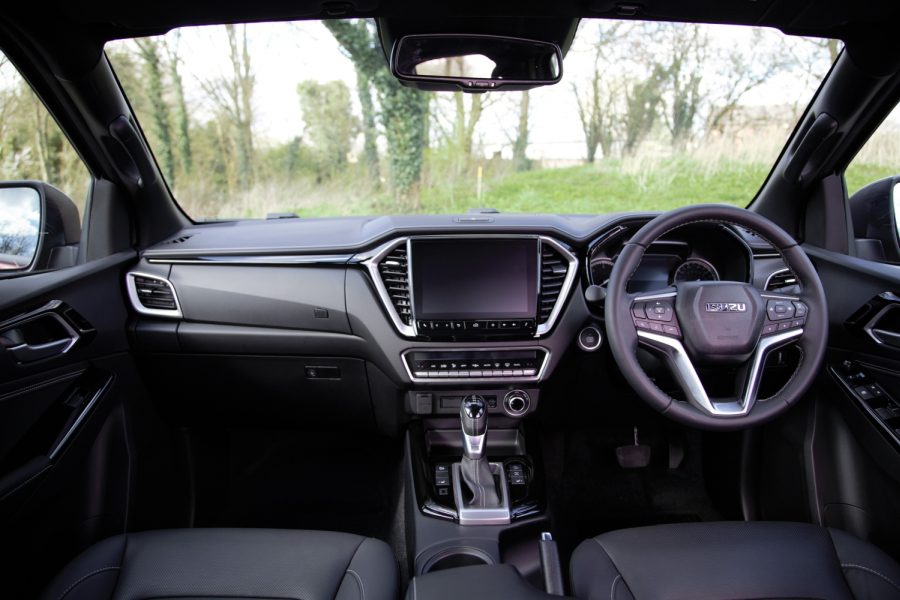
All of the models beyond the basic Utility range are fitted with Isuzu’s new diff lock as standard, and there are fancy new features such as on-the-fly four-wheel drive engagement and descent control.
The bare bones, though, remain the same, and the D-Max continues to be rugged and durable in an off-road environment.
Interior
The most visible changes can be found inside the cab where Isuzu’s plan to grow ‘adventure’ sales are plain to see.
The standout feature is the central infotainment screen that supports Apple Car Play and Android Auto. In our V-Cross, the screen comes at a chunky 9 inches with a very receptive touchscreen, even if the graphics do already seem a little past their prime.
Luxurious leather seats and soft touch plastics also provide a marked departure from the uncompromising interior of previous D-Max generations, but could prove liable to damage in the rough and tumble of use on the farm.
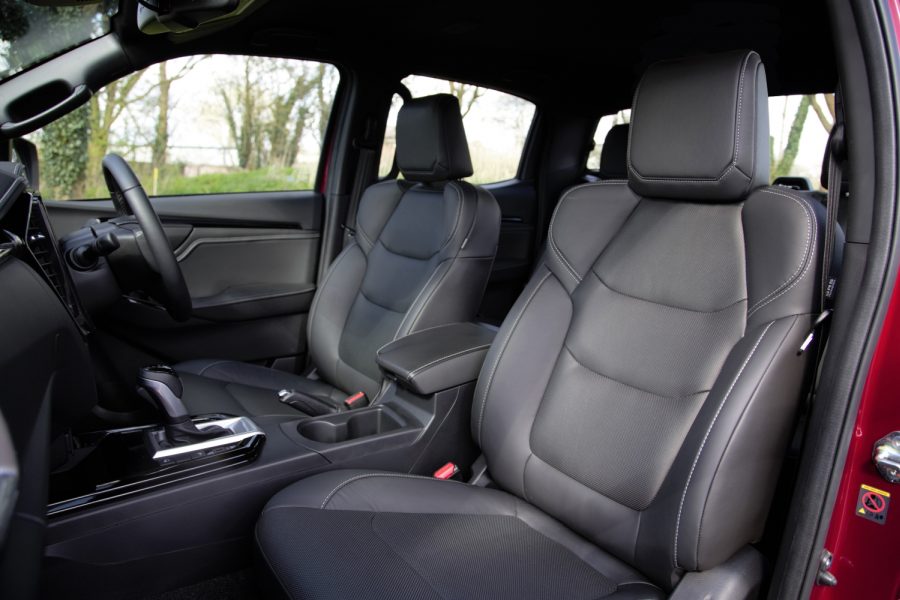
Lots of new automated functions can now be found inside the D-Max. A reversing camera proves a particularly useful addition, whilst there is also now keyless entry, dual-zone climate control, and automated lights and windscreen wipers.
The techy additions also spill over into the truck’s safety features which now include standard active safety systems, lane departure warning, and an intelligent speed limiter.
All of these contribute the D-Max’s five-star Euro NCAP rating that makes it the safest pickup in the market.
Value
Isuzu claim that the manual V-Cross we tested could manage a combined figure of 33.6 mpg, which appears to be more than achievable as we found it managed around 37mpg after a week of mixed driving, whilst CO2 emissions sit between 220 and 241g/km.
The standard appears to be strong across all of the specifications, with even the bottom Utility range available in single, extended, and double cab options, and 18 inch alloy wheels are standard on all of the vehicles.
When it comes to pricing, the D-Max continues to offer value for money. It undercuts the Hilux across all of the specifications, but also provides a good balance between work and family life.
Turning to a conventional SUV would up the price tag significantly, and few SUVs would be able to compete with the D-Max on toughness and durability away from the road.
Price List
OTR Price, ex-Vat
Utility double-cab - £24,509 (manual only)
DL20 double-cab - £26,759 (manual), £28,259 (auto)
DL40 double-cab - £29,759 (manual), £31,259 (auto)
V-Cross double-cab - £31,259(manual), 32,759 (auto)
Key Stats (V-Cross Double Cab Manual)
Engine - 1.9 litre, 4 cylinder
Power - 164hp at 3,600rpm
Torque - 360Nm at 2,000 - 2,500rpm
Max speed - 112mph
0-60 - 12.7 secs
Combined consumption - 33.6mpg
Kerb weight - 2,000kg
Payload - 1,100kg
Towing capacity - 3,500kg
